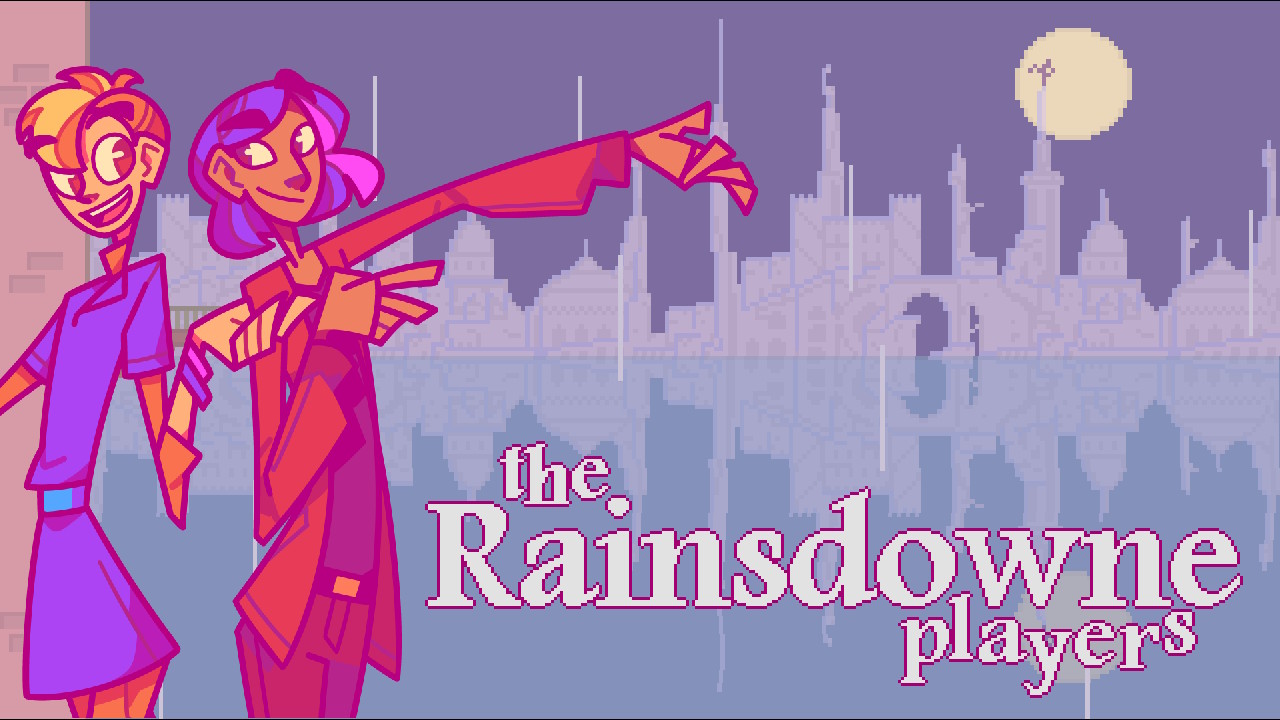[Review] The Rainsdowne Players – Nintendo Switch
The Rainsdowne
Players
Nintendo Switch
Developed By: Stephen
O’Gorman
Published By: Stephen O’Gorman
Category: Role-Playing, Adventure,
Simulation
Release Date: 02.07.19
Ah, the theatre. Full of wonder, adventure, romance, and thrown objects. Well, OK, the last one may be unique to the city of Rainsdowne, but they do so enjoy hurling things at their actors’ heads. The Rainsdowne Players for the Nintendo Switch is an indie by Stephen O’Gorman about the trials and tribulations of a pair of actors attempting to get a theatre troupe off the ground in the city of Rainsdowne. It has a great story, some fun mini games, and a great minimalist aesthetic that make it a very charming experience.
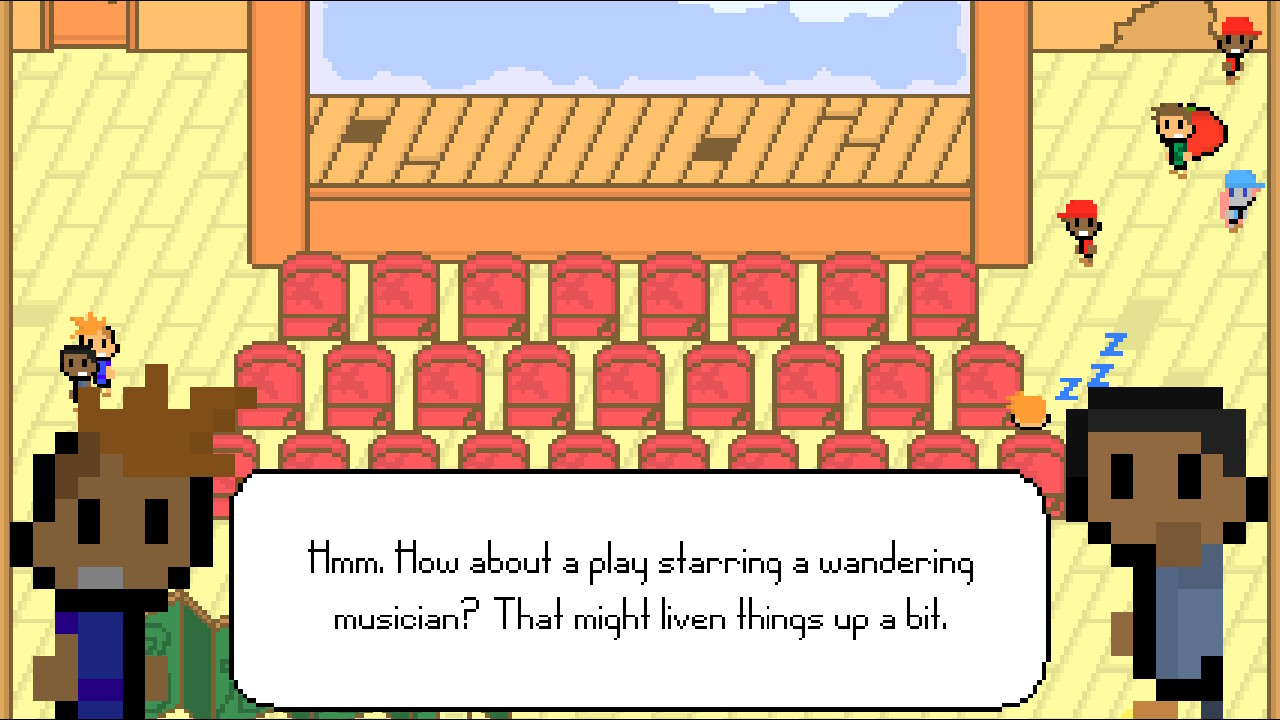
All the World’s a Stage
In the rainy town of Rainsdowne, two actors with a shared dream are renting a stage space far away from the town’s traditional theatre district. Orange-hair and blue-hair are two young thespians attempting to bring their craft to the people. Players get to name each character whatever they want; I went with Doug and Carleen, for reasons of which I am unsure. They just looked like a Doug and a Carleen to me. Orange-hair is enthusiastic and confident but minimally trained, whereas blue-hair is immensely talented and attended a prestigious acting program for a while, but is racked by a melancholic self-doubt. Together with a lethargically ambitious box office manager, orange-hair and blue-hair aim to take the acting world by storm.
With a small but fun and engaging main cast, The Rainsdowne Players builds a strong narrative core – but what would you expect from a game at least partially about storytelling? Orange and blue are compelling leads with a natural interplay. The game’s dialogue is snappy and well-constructed, managing both to entertain and instruct players in the game’s mechanics. The main story that plays out between milestones sees the characters grow and change in a satisfying arc, giving the game a solid backbone around which to build the rest of its narrative world.
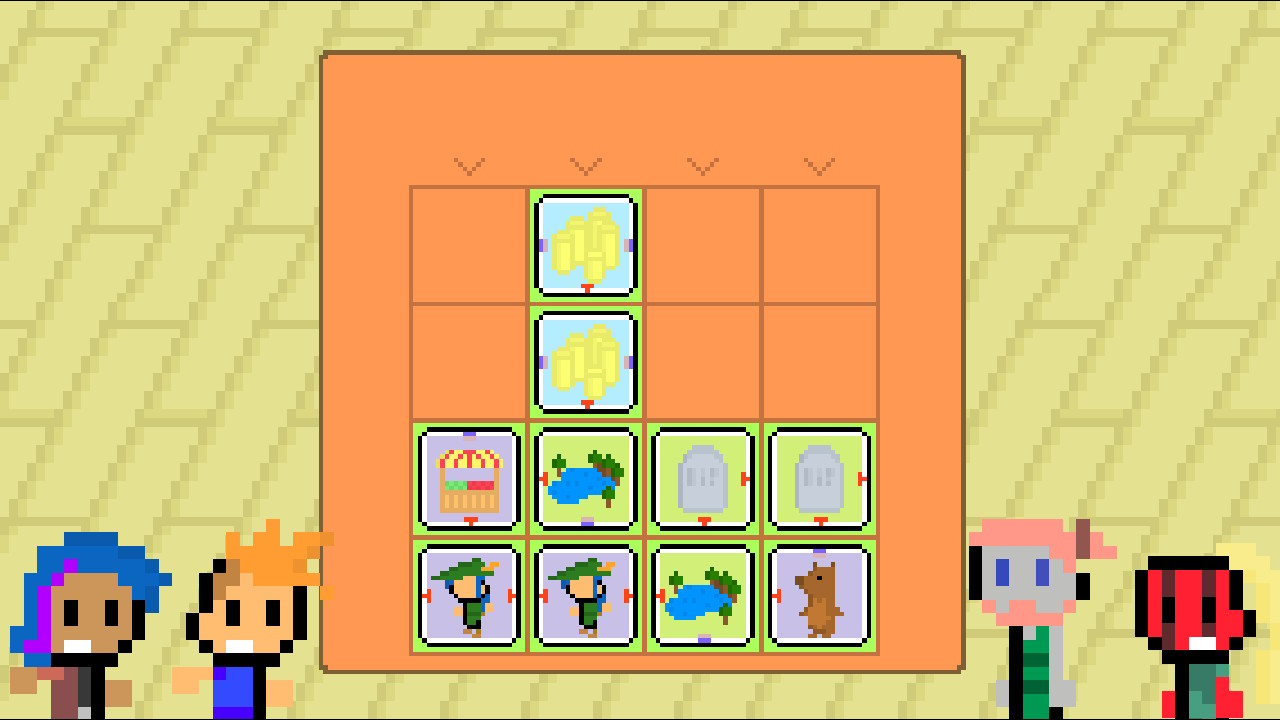
Story Structure
Before each performance, players can choose a storyline from idea cards gathered during the game. You choose a subject (the play’s main character), a location where the play takes place, a purpose for the subject, an encounter to overcome, and an outcome for the adventure. Orange and Blue then take the stage, acting out the story as instructed. These plays have no dialogue, really, just some costumes and icons over the actors’ heads when something happens. After the show, you get money based on how many people stayed all the way through the play. You can also then wander around the town, talking to potential audience members to gain more idea cards to build new shows.
Idea cards come from lots of different places and activities, including as rewards for mini games and as rewards for performing a play with subjects suggested by certain audience members. Speaking with people around town will reveal their interests, and if you manage to put together a play encompassing their suggestions they will often reward you with an idea card. Some cards are main-character sensitive, meaning only orange or blue can get them, so if someone has an idea icon over their head and speaking to them with orange doesn’t net you any results, you have to talk to them with blue. Trying as many plays as possible with as many combinations as possible is the best way to increase your crowd size and move the main story forward. You also eventually unlock a hint book, where the cat who lives in your theatre will give you a hint about what certain audience members want to see specifically in exchange for money.
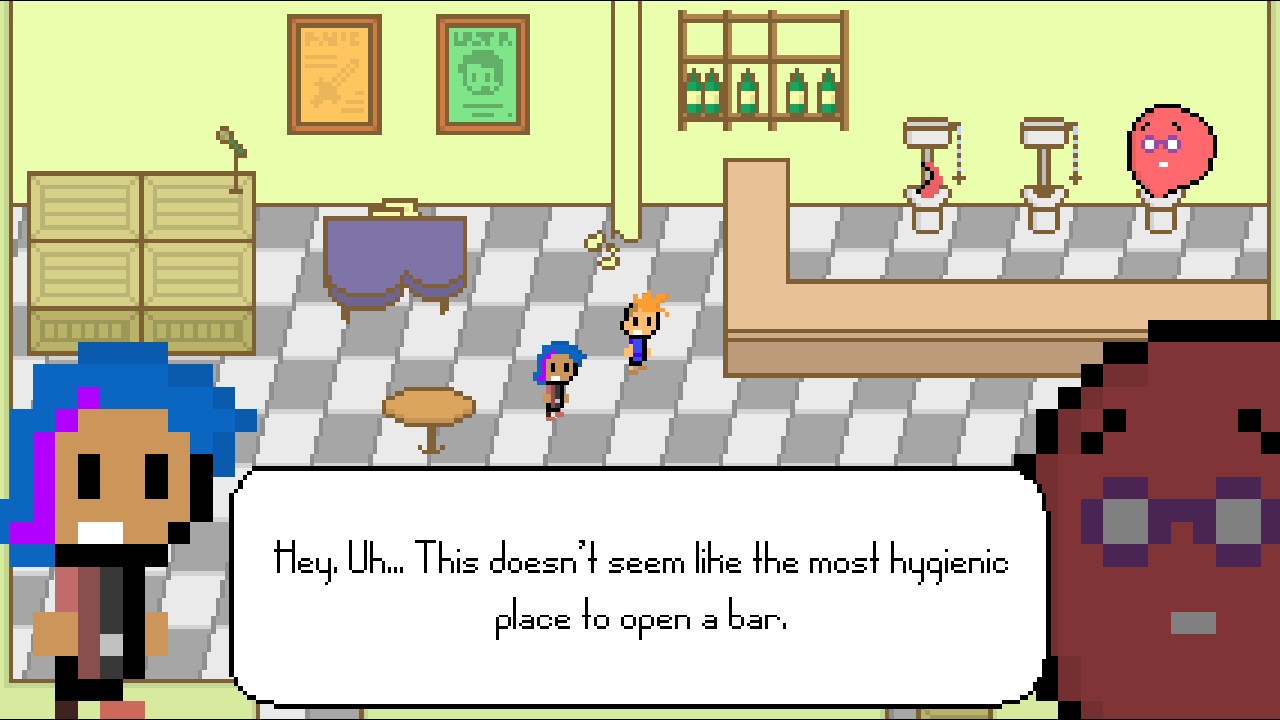
Dodge, Duck, Dip, Dive, and… Dodge
I said before that the plays you act out don’t come with any dialogue, and that’s actually a good thing; you won’t have time to see it with all the dodging you’re going to be doing. The residents of Rainsdowne are apparently all very rude spectators, and they throw items like bottles, paper airplanes, tomatoes, rocks, and fish on stage at your actors during their performance. The dodging mechanics are extremely simple; hit the left button to have orange dodge, and the right to have blue dodge. The controls are simple, but executing them… dang. Sometimes the items are being thrown so fast and furious that I found it pretty much impossible to dodge everything, which got a little frustrating. The more you get hit, the more things get thrown and the more people leave the theatre. If everyone leaves, the show’s over and you don’t get any money. Adding to the challenge and/or frustration, every item thrown has a different behavior. Fish bounce after being thrown, for instance, so both characters will need to dodge it. It’s a fun idea at its core, but it’s set up so that if you make a few mistakes it gets almost impossible to recover. I suppose that’s life in the theatre, but still. It doesn’t make for a great game experience.
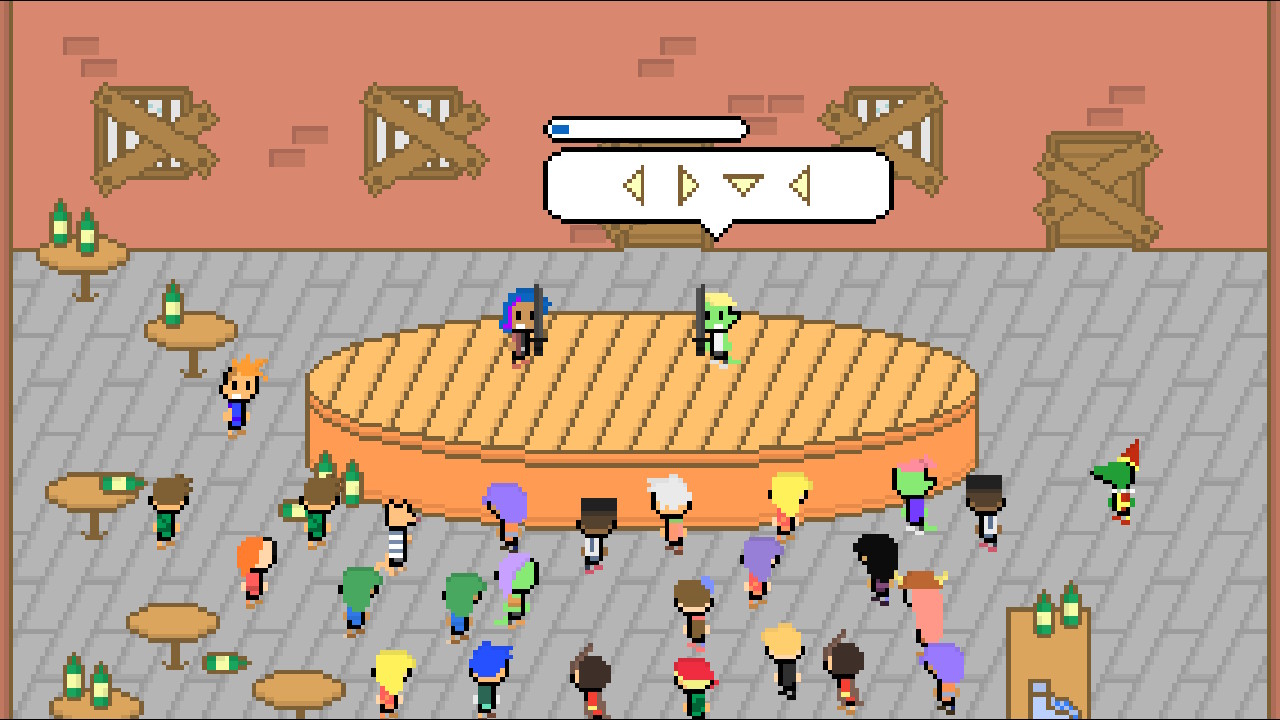
Games Aren’t Just One Game Anymore
In addition to running your own theatre, you can also run around town and participate in other activities to get money. You can go to a night club and sing, you can play a cannon-shooting game, participate in a pretty neat card game tournament, and perform fight scenes in another club. And, like all blockbusters nowadays, it even has a fishing mini game! Pretty much everything but the card game is rhythm or timing-based, so if you don’t have any rhythm like a certain reviewer get ready for some challenges. Playing these games will reward players with things like money and new idea cards. You can use the money to buy things like costumes, the aforementioned hints for story ideas, and even some idea cards. Really, everything in this game is about getting more idea cards.
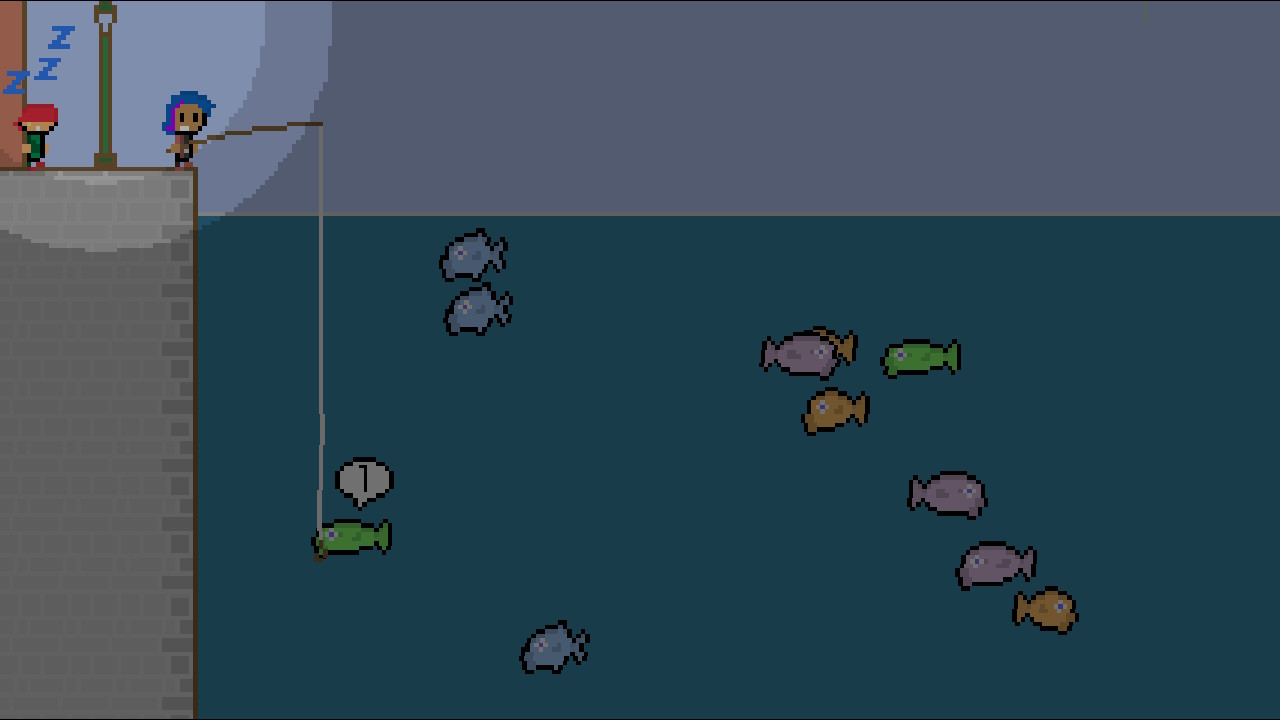
Production Values
The Rainsdowne Players adopts a very minimalist aesthetic for its graphical style. Everything is lovingly rendered in 8-bit pixels, from the charming and endearing character models to the surprisingly detailed backgrounds. I can’t say that it’s the best-looking game I’ve ever played, but the graphics really add to the game’s light, fun atmosphere. The soundtrack is likewise minimalist but nonetheless expertly executed. The music is active during performances, and slower when adventuring around town. Overall, the game’s art direction does a lot with a little.
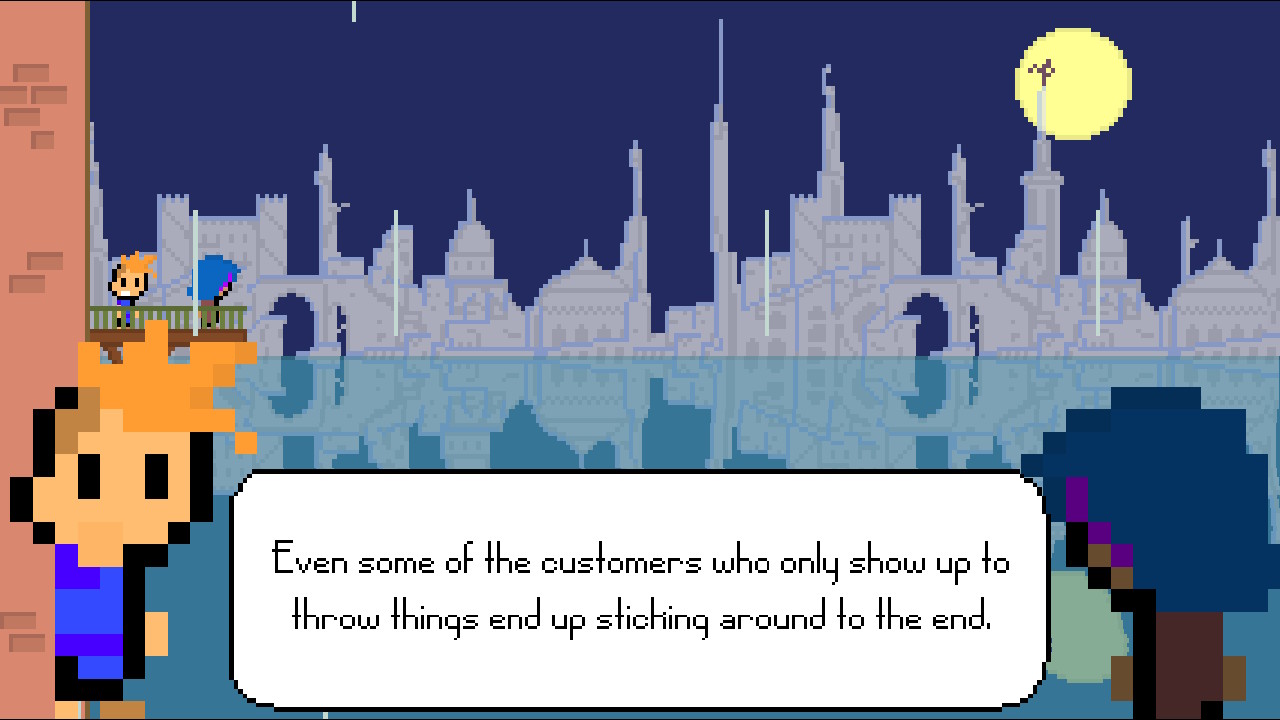
Playability
There aren’t any touch or motion controls in The Rainsdowne Players, so you can play it however you prefer. I didn’t really see any difference whether playing it docked or undocked, with a Joycon or a Pro. The dodging sequences’ challenge was either easy enough that I could keep up no matter which controller I chose, or so fast that it didn’t seem to matter what I did.
TL;DR: Light, fun adventure/simulation game.
3.5/5






